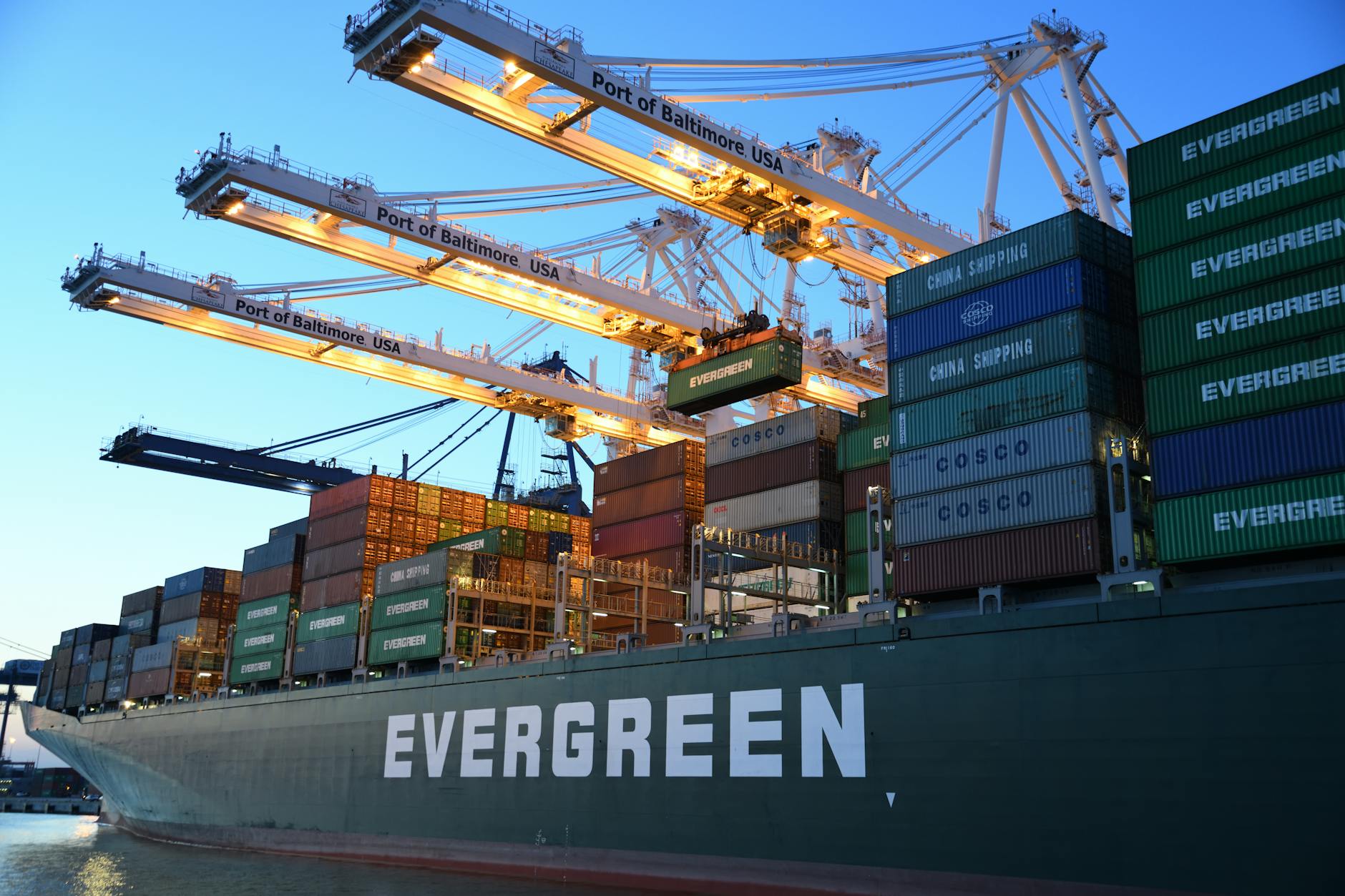A Shift in Diplomacy: Trump and Zelenskyy Chart a New Course for Ukraine Amidst Shifting European Alliances
Reconciliation and Security Guarantees Dominate White House Summit
The corridors of the White House recently witnessed a diplomatic gathering that signaled a notable evolution in international relations, as President Donald Trump welcomed Ukrainian President Volodymyr Zelenskyy and a delegation of European leaders. The atmosphere of this high-stakes meeting, described as considerably warmer than previous encounters, underscored a renewed emphasis on dialogue and potential pathways toward peace and security for Ukraine. President Trump’s public pronouncements following the summit suggested a pragmatic approach to the ongoing conflict, indicating that a ceasefire might not be a prerequisite for advancing a peace deal. This stance, coupled with an openness to providing security guarantees for Ukraine, has sent ripples through both domestic and international political landscapes, prompting a deeper examination of the implications for regional stability and the future of Ukraine’s sovereignty.
The summit, meticulously reported by NBC Nightly News anchor Tom Llamas, was more than just a perfunctory exchange of pleasantries; it represented a critical juncture in the ongoing narrative of Ukraine’s struggle for self-determination and its complex relationship with both the United States and its European neighbors. The nuanced discussions and public statements emanating from the White House painted a picture of evolving diplomatic strategies, particularly in the context of Russia’s continued influence and the enduring challenges Ukraine faces in securing its territorial integrity and economic future. This article will delve into the multifaceted aspects of this significant meeting, exploring its historical context, analyzing the key diplomatic maneuvers, examining the potential benefits and drawbacks of the proposed approaches, and looking ahead to the likely trajectory of these developing international dynamics.
Context & Background
To fully grasp the significance of the recent White House meeting, it is essential to contextualize it within the broader geopolitical landscape and the preceding interactions between President Trump and President Zelenskyy. The relationship between the United States and Ukraine has been a central theme in global affairs, particularly since Russia’s annexation of Crimea in 2014 and its subsequent involvement in the Donbas region. This period has been marked by Ukraine’s persistent efforts to strengthen its ties with Western institutions, including NATO and the European Union, while simultaneously navigating the persistent threat posed by Russian aggression.
The initial interactions between President Trump and President Zelenskyy were often characterized by a degree of transactional diplomacy and public scrutiny. Early in Zelenskyy’s presidency, which began in May 2019, the dynamic between the two leaders was notably influenced by the political climate in the United States. The contents of a July 2019 phone call between Trump and Zelenskyy became a focal point of impeachment proceedings against President Trump, centered on allegations that Trump had pressured Zelenskyy to investigate political rival Joe Biden and his son, Hunter Biden. This controversy cast a long shadow over early US-Ukraine relations, raising questions about the nature of American support and its potential politicization.
In the months leading up to this recent summit, the geopolitical landscape surrounding Ukraine had continued to evolve. While direct military confrontation with Russia had not escalated significantly, the simmering conflict in eastern Ukraine remained a persistent source of instability. European leaders, while largely united in their condemnation of Russian actions and their support for Ukrainian sovereignty, had also grappled with the economic implications of sanctions against Russia and the humanitarian cost of the ongoing conflict. Within Ukraine, President Zelenskyy had been working to implement reforms aimed at strengthening democratic institutions, combating corruption, and fostering economic growth, all while seeking continued international support.
The timing of this White House meeting, therefore, was opportune for recalibrating diplomatic strategies. It came at a point when the United States was assessing its role in global security and when Ukraine was seeking to consolidate international backing for its territorial integrity and its aspirations for closer integration with the West. The presence of European leaders suggested a desire to present a united front and to coordinate efforts in addressing the complex challenges facing the region. This meeting was not just about bilateral relations between the US and Ukraine; it was a signal of broader strategic alignment, or potential realignment, among key Western powers in dealing with a resurgent Russia and a Ukraine striving for stability.
In-Depth Analysis
President Trump’s statement that a ceasefire is not a prerequisite for moving forward with a peace deal represents a significant departure from traditional diplomatic approaches, which often view a cessation of hostilities as a foundational step in any peace negotiation. This pragmatic, albeit unconventional, stance suggests an openness to exploring diplomatic solutions that may bypass the immediate cessation of fighting, perhaps focusing instead on de-escalation measures or phased agreements. Such an approach could potentially accelerate the peace process by removing a major hurdle, but it also carries the risk of legitimizing existing territorial gains by Russia or failing to address the immediate humanitarian concerns of those affected by ongoing hostilities.
The offer of “security guarantees” for Ukraine is another critical element of the summit’s outcome. The precise nature and scope of these guarantees were not fully detailed in the initial reports, leaving room for interpretation and speculation. Historically, security guarantees have ranged from explicit defense pacts to more general assurances of support. For Ukraine, which has long sought NATO membership as the ultimate security guarantee, the nature of these assurances from the Trump administration would be of paramount importance. Such guarantees could manifest as increased military aid, joint training exercises, intelligence sharing, or even a more direct commitment to Ukraine’s defense. The successful implementation of these guarantees would likely depend on the political will of the US administration and its ability to garner support from NATO allies.
The presence of European leaders at the White House alongside Presidents Trump and Zelenskyy highlights a coordinated effort to address regional security concerns. This multilateral approach suggests a recognition that the challenges facing Ukraine are not solely a bilateral issue between the US and Ukraine, but rather a matter of broader European stability. The European Union and its member states have been significant providers of financial and political support to Ukraine, as well as proponents of sanctions against Russia. Their involvement in these discussions likely aimed to synchronize strategies, ensure a unified message to Moscow, and reinforce the commitment of Western powers to Ukraine’s sovereignty and territorial integrity.
Furthermore, the “warmer tone” reported by NBC Nightly News is a subtle yet significant observation. It indicates a potential thawing of diplomatic frost that may have characterized earlier interactions. This shift could be attributed to several factors, including the evolving political realities in both countries, a shared desire to find pragmatic solutions to complex problems, or perhaps a deliberate effort by both leaders to present a united front on the international stage. The report’s emphasis on this warmer tone suggests a more constructive and less adversarial engagement, which could pave the way for more productive dialogue and cooperation in the future.
Analyzing the specific motivations of each party involved provides further insight. For President Trump, this summit could be viewed as an opportunity to demonstrate his administration’s commitment to international diplomacy and to present a narrative of successful negotiation and peace-building. For President Zelenskyy, the meeting represented a crucial chance to secure continued and potentially enhanced support from the United States, a vital ally, and to signal to his own people and to the international community that Ukraine is actively pursuing pathways to peace and stability. For the European leaders, their participation underscored the interconnectedness of European security and their shared interest in a stable and sovereign Ukraine, free from external aggression.
Pros and Cons
The diplomatic overtures and potential agreements stemming from the White House meeting present a complex interplay of potential benefits and drawbacks for Ukraine, the United States, and the broader European security architecture. A balanced assessment requires examining these facets critically.
Potential Pros:
- Accelerated Peace Process: By decoupling the requirement for a ceasefire from the advancement of a peace deal, President Trump’s approach could potentially streamline negotiations and expedite the search for a resolution to the conflict in eastern Ukraine. This could lead to a quicker de-escalation of tensions and a reduction in ongoing casualties.
- Enhanced Security Assurances: The promise of security guarantees from the United States, if robust and clearly defined, could significantly bolster Ukraine’s defense capabilities and deter further Russian aggression. This could include advanced military hardware, intelligence sharing, and joint security initiatives.
- Strengthened Transatlantic Alliance: The inclusion of European leaders in the White House discussions signals a potential for renewed coordination and unity among Western nations regarding Ukraine policy. This could present a more cohesive front to Russia and reinforce the commitment to democratic values and international law.
- Economic Stability and Reconstruction: A more stable security environment, fostered by diplomatic progress and enhanced security guarantees, could unlock greater opportunities for foreign investment, economic development, and reconstruction within Ukraine, thereby improving the livelihoods of its citizens.
- Diplomatic Capital for Zelenskyy: Successful engagement with the US President and European leaders can provide President Zelenskyy with significant diplomatic capital at home, bolstering his administration’s credibility and its ability to implement reforms and address domestic challenges.
Potential Cons:
- Risk of Premature Concessions: Without a prior ceasefire, there is a risk that Ukraine might be pressured into making concessions on territorial integrity or sovereignty as part of a peace deal, particularly if security guarantees are perceived as insufficient or unreliable.
- Ambiguity of Security Guarantees: The effectiveness of security guarantees hinges on their specificity and the commitment of the guaranteeing power. Vague or poorly defined assurances could leave Ukraine vulnerable and provide a false sense of security.
- Potential for Russian Exploitation: Russia might interpret a shift away from demanding an immediate ceasefire as an indication of Western division or a softening of resolve, potentially emboldening further actions that undermine Ukraine’s sovereignty.
- Alienation of Hardliners: Some factions within Ukraine and its international supporters might view a peace deal that does not include an immediate and unconditional ceasefire as a betrayal of core principles or a capitulation to Russian demands.
- Internal Political Division: The specifics of any proposed peace deal and security guarantees could lead to internal political divisions within Ukraine, particularly if there are disagreements about the trade-offs involved or the perceived fairness of the terms.
- Erosion of International Norms: A peace process that bypasses established norms, such as the requirement for a ceasefire, could set a precedent that undermines international mechanisms for conflict resolution and peace-building.
Key Takeaways
- President Trump and President Zelenskyy held a summit at the White House that was noted for its improved diplomatic tone compared to previous encounters.
- President Trump suggested that a ceasefire is not a mandatory precondition for advancing a peace deal concerning Ukraine.
- The US President indicated a willingness to support security guarantees for Ukraine.
- European leaders were present, suggesting a coordinated approach to regional security and Ukraine policy.
- The meeting signals a potential shift in US-Ukraine diplomatic strategy, with an emphasis on pragmatic solutions and potential de-escalation.
- The specifics of any security guarantees and the terms of a potential peace deal remain to be fully clarified.
Future Outlook
The diplomatic currents set in motion by the White House summit suggest a future for Ukraine and its relationship with the United States and Europe that is characterized by both opportunity and uncertainty. The immediate future will likely be dominated by the practical implications of President Trump’s statements. The clarity and substance of the proposed security guarantees will be paramount. If these guarantees are concrete, actionable, and provide a credible deterrent against further aggression, they could significantly alter the strategic calculus for all parties involved. This would necessitate detailed bilateral discussions between the US and Ukraine, likely involving defense ministries and national security advisors.
Simultaneously, the approach to peace negotiations without an immediate ceasefire will be closely scrutinized. The success of this strategy will depend on the ability to achieve tangible de-escalation measures on the ground, such as localized ceasefires, prisoner exchanges, and the withdrawal of certain military assets. The willingness of all parties, including Russia, to engage in such phased diplomacy will be a critical determinant of its efficacy. The international community, particularly European nations, will play a vital role in either supporting or scrutinizing these unconventional diplomatic pathways. Their collective engagement will shape the legitimacy and effectiveness of any emerging peace framework.
The broader geopolitical context remains a significant factor. Russia’s reactions to these developments will be closely observed. Any perceived shift in Western resolve or unity could be met with further assertive actions, or conversely, a willingness to engage in good-faith negotiations. The internal political dynamics within Ukraine will also influence the trajectory. President Zelenskyy’s ability to garner domestic support for any peace proposal and security arrangements will be crucial for their long-term sustainability. Furthermore, the upcoming political landscape in the United States, including potential shifts in presidential administrations, could introduce further variables into the equation, potentially altering the nature and reliability of US commitments.
Economically, a more stable Ukraine could attract increased foreign investment and facilitate post-conflict reconstruction. The development of infrastructure, the strengthening of democratic institutions, and the continued fight against corruption will be essential for harnessing these opportunities. The European Union’s ongoing commitment to supporting Ukraine’s economic and political reforms will remain a critical component of its recovery and development. Ultimately, the future outlook is contingent on the effective translation of diplomatic pronouncements into tangible actions that foster lasting peace, security, and prosperity for Ukraine.
Call to Action
As diplomatic strategies evolve, it is imperative for citizens, policymakers, and international observers to remain engaged and informed. The pursuit of peace and security for Ukraine requires a multifaceted approach that prioritizes clear communication, accountability, and the unwavering support for Ukraine’s sovereignty and territorial integrity.
- Stay Informed: Continuously seek out credible and diverse news sources to understand the complexities of the situation and the nuances of diplomatic negotiations. The U.S. Department of State provides official updates on foreign policy and international relations, offering valuable insights into the US government’s stance.
- Support Diplomatic Solutions: Advocate for diplomatic solutions that uphold international law and human rights. Engage with elected officials to express your views on foreign policy and to encourage the prioritization of peaceful conflict resolution.
- Promote Transparency: Demand transparency from governments regarding the terms of any agreements or security guarantees made concerning Ukraine. Understanding the specifics is crucial for evaluating their effectiveness and potential implications. Organizations like the Atlantic Council offer expert analysis on European security and Ukraine.
- Encourage International Cooperation: Support efforts that foster cooperation and unity among democratic nations in addressing global challenges. Organizations such as the North Atlantic Treaty Organization (NATO), while not directly involved in the specifics of the reported meeting, represent a framework for collective security and dialogue among allies.
- Humanitarian Aid: Continue to support humanitarian organizations working on the ground to provide assistance to those affected by the conflict in Ukraine. Understanding the human cost of ongoing instability reinforces the urgency of diplomatic efforts. The United Nations also plays a significant role in coordinating humanitarian efforts and advocating for peace.
The path forward for Ukraine is intrinsically linked to the strength and coherence of its international partnerships. By remaining vigilant, engaged, and supportive of principled diplomacy, we can contribute to a future where peace, stability, and self-determination prevail.


